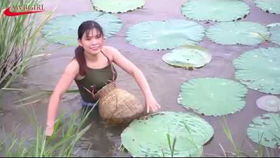
Introduction: Fishing, an ancient and timeless activity, has been practiced by generations. While traditionally associated with men, women have also found joy and fulfillment in this serene pastime. If you are a woman looking to learn traditional fishing techniques, this article will provide you with valuable insights and tips to help you get started.
Understanding the Basics: Before diving into the intricacies of traditional fishing, it is essential to understand the basics. Familiarize yourself with the different types of fishing rods, reels, lines, hooks, and bait. Research the local fish species and their preferred habitats to determine the best techniques and equipment for your chosen fishing spot.
Choosing the Right Equipment: Selecting the appropriate equipment is crucial for a successful fishing experience. As a beginner, opt for a lightweight spinning rod and reel combination, which are easier to handle and less intimidating. Ensure that the rod and reel are properly matched to handle the expected fish size and strength.
Learning to Cast: Casting is a fundamental skill in fishing. Begin by practicing with a short cast, focusing on your grip, stance, and motion. Hold the rod with a comfortable grip, keeping your wrist relaxed. Position your feet shoulder-width apart, and bend slightly at the knees. Swing the rod back and forth, using your entire body's momentum to generate power. Aim for a smooth, controlled motion to avoid spooking the fish.
Mastering the Bait Presentation: The way you present your bait can significantly impact your success. Learn to tie various knots, such as the improved clinch knot or the palomar knot, to secure your bait effectively. Experiment with different bait types, such as live bait, artificial lures, or natural baits like worms or crustaceans. Pay attention to the way the bait moves in the water and adjust accordingly.
Reading the Water: Understanding the behavior of fish in different water conditions is crucial. Observe the water's surface for signs of fish activity, such as ripples, bubbles, or disturbances. Pay attention to the depth and structure of the water, as fish often congregate in specific areas. Use this knowledge to determine the best spot to cast and the appropriate depth to present your bait.
Patience and Persistence: Fishing requires patience and persistence. Do not get discouraged if you do not catch fish immediately. Remember that fishing is a relaxing and meditative activity, and the experience itself is rewarding. Take the time to enjoy the surroundings, observe nature, and practice your skills.
Safety First: Always prioritize safety when fishing. Wear appropriate clothing, such as a hat, sunglasses, and sunscreen to protect yourself from the sun. If you are fishing in a remote area, inform someone about your plans and expected return time. Carry a first aid kit, a whistle, and a flashlight in case of emergencies.
Joining a Fishing Community: Connecting with other anglers can provide valuable guidance and support. Join local fishing clubs, attend fishing workshops, or participate in fishing tournaments. Engage with fellow anglers, ask questions, and share your experiences. This will help you improve your skills and make new friends who share your passion for fishing.
Conclusion: Learning traditional fishing techniques can be a rewarding and enjoyable experience for women. By understanding the basics, choosing the right equipment, mastering casting and bait presentation, and developing patience and persistence, you can become a skilled angler. Remember to prioritize safety and connect with the fishing community to enhance your skills and share your passion for this timeless activity. Happy fishing!












